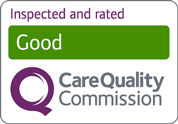What is bacterial vaginosis?
- What is BV?
- Is bacterial vaginosis an STI?
- What does bacterial vaginosis look like?
- What causes bacterial vaginosis?
- BV symptoms
- Bacterial vaginosis diagnosis
- Other STIs causing similar symptoms
- What are the complications of BV?
- How to treat bacterial vaginosis
- How to prevent bacterial vaginosis
- Is bacterial vaginosis contagious?
- Can bacterial vaginosis go away on its own?
- Conclusion
Reviewed by Dr Bhavini Shah
Bacterial vaginosis (BV) is a common condition affecting the vagina. BV disrupts the natural balance of the vagina causing changes to vaginal discharge, as well as discomfort.
In this article we look at the symptoms of BV, tests you can take and treatment available.
What is BV?
BV is a condition that affects the balance of different bacteria in the vagina. Normal vaginal bacteria (lactobacilli) aren't harmful. BV occurs when other types of bacteria (anaerobic bacteria) begin to grow and multiply.
Lactobacilli usually maintain a slightly acidic environment in the vagina, which prevents other types of bacteria from growing. If these lactobacilli begin to reduce in number the vagina is slightly less acidic than normal, meaning more anaerobic bacteria can grow. This change in the balance of bacteria and acidity is the cause of BV.
Is bacterial vaginosis an STI?
BV is not currently considered a sexually transmitted infection (STI), although sex can cause it to occur. You’re more likely to have BV if you’re sexually active. A woman can pass BV to another woman during sex.
However, a recent study has claimed that BV should be considered an STI as it shows:
- BV recurrence can be linked to reinfection from partners
- Treating BV as an STI (treating both sexual partners in a couple) halved BV recurrence
The study was not able to determine what bacteria causes BV.
The NHS still doesn’t consider BV to be an STI, though the British Association for Sexual Health and HIV stated that the study was “valuable evidence… that BV-associated bacteria may be sexually transmitted”.
You’re also more likely to get an STI if you have BV. Find out what is an STI in our guide.
What does bacterial vaginosis look like?
Many women who have bacterial vaginosis (BV) don’t know they have the infection. This is because BV doesn’t always show symptoms. However, if you do have symptoms BV will change how your vaginal discharge normally looks. Your vaginal discharge may be grey, watery and thin.
What causes bacterial vaginosis?
The cause of the changing levels of bacteria in the vagina is not fully understood. However, you’re more likely to get BV if:
- You’re sexually active - women who’ve not had sex can get BV, but it is less common.
- You’ve recently changed your sexual partner, you change sexual partners often or have multiple sexual partners.
- You’ve had an STI in the past.
- You smoke.
- You’ve got the copper coil.
- You use medicated or perfumed body wash, bubble bath or soap.
- You use vaginal deodorant.
- You use strong detergents to wash your underwear.
- You wash the inside of your vagina with water and/or soap - this is known as vaginal douching.
It’s also thought that hormonal changes in the menstrual cycle, oral sex, semen staying in the vagina after sex and genetic factors can also play they’re part in making you more prone to BV.
BV symptoms
Up to half of people won’t experience any symptoms of BV or may not notice them. The first thing you might notice is a change to your normal vaginal discharge.
Your vaginal discharge may be:
- Thin and watery
- Grey
- Smelly with an unpleasant or fishy odour
BV doesn’t usually cause any soreness or itchiness.
Bacterial vaginosis diagnosis
If you think you have BV you can speak to your GP or visit your local sexual health clinic. Your doctor or nurse will about any symptoms you may have; they may want to look at your vagina to check for symptoms.
Bacterial vaginosis tests
To test for BV, a doctor or nurse may do a swab test. This is where a cotton bud is used to swab your vagina or discharge. They’ll then check the swab to see if BV is present.
You can buy bacterial vaginosis tests to do at home. However, it’s always better to speak to a medical professional as they rule out any other conditions, like STIs.
Other STIs causing similar symptoms
Thrush, trichomonas, chlamydia, gonorrhoea and genital herpes can all cause unusual vaginal discharge. It’s also possible to have more than one of these conditions at the same time. Trichomonas is particularly easy to confuse with BV, as it can cause discharge to have a fishy smell.
If your discharge does not smell fishy but is watery, lumpy, cloudy, yellow or green, or there is more of it than usual then this could be a sign of chlamydia, gonorrhoea or herpes. You should speak to your clinician about this and any long-lasting changes to your vaginal discharge. You may need to take an STI test.
What are the complications of BV?
While lots of people might not experience symptoms, for those that do treatment is usually effective if used correctly. It’s common for BV to return and some people do get it multiple times.
There is some evidence to suggest that BV may be present in people who’ve had a miscarriage, premature delivery of their baby or a low birth weight. If you've got symptoms of BV and are pregnant or breastfeeding, it's important to speak to your clinician.
If you’re worried you’ve got BV, call your GP or visit your local sexual health clinic to get the advice and support you need. They will also be able to offer treatment if needed.
How to treat bacterial vaginosis
BV can be effectively treated by antibiotics. You may be prescribed oral antibiotics such as metronidazole or a gel version of the treatment which can be applied directly to the vagina. If you have a same sex partner they may need treatment as well.
Please note some gels can weaken latex condoms, diaphragms and caps. So, it’s best to speak to your clinician when you get prescribed treatment, if you use any of these types of contraception.
In the study mentioned above, heterosexual couples with BV where both partners were treated had a lower recurrence rate than couples where only the female partner was treated.
How to prevent bacterial vaginosis
There’s some evidence to suggest that taking the combined contraceptive pill and using condoms during sex can reduce the risks of BV. Also there are some behavioural changes you can make to reduce your chances of getting BV, such as:
- Stop vaginal douching
- Have showers instead of baths
- Avoid shower gel or shampoo in the bath
- Stop smoking
Is bacterial vaginosis contagious?
Bacterial vaginosis is not contagious. It’s not an STI, rather an imbalance of bacteria within the vagina. However, women can pass the condition to other women during sex.
If you’re not sure if you have BV or an STI, speak to your GP and read our guide for more advice on STI symptoms.
Can a man catch bacterial vaginosis?
No, bacterial vaginosis is an infection that affects the vagina. Men can’t catch BV from their partner. You can still have sex if your female partner has BV, however BV treatment can affect condoms and contraception.
However, it has been suggested that, while not being ‘infected’, men may still be able to carry the bacteria for BV in the distal urethra and subpreputial space. This can increase the risk of re-infection if they have a female partner.
Can bacterial vaginosis go away on its own?
Occasionally bacterial vaginosis can go away on its own. If you’re experiencing symptoms, it’s always best to seek medical advice. A healthcare professional can confirm your symptoms are BV and find the best treatment for you.
Conclusion
BV is a common vaginal infection that can cause changes to your normal vaginal discharge. It’s important to check your vagina and discharge regularly. Once you know what’s normal for you, it’s easy to spot any changes or symptoms that could be caused by BV or an STI.
Here at Online Doctor we have a range of STI tests for people who have no symptoms, but would like to get themselves checked. We also have some treatment options for people who’ve been diagnosed with an STI.
References
www.nhs.uk/conditions/bacterial-vaginosis/
patient.info/sexual-health/vaginal-discharge-female-discharge/bacterial-vaginosis
https://www.bbc.co.uk/news/articles/c2lj7e0519xo
https://www.nejm.org/doi/full/10.1056/NEJMoa2405404





